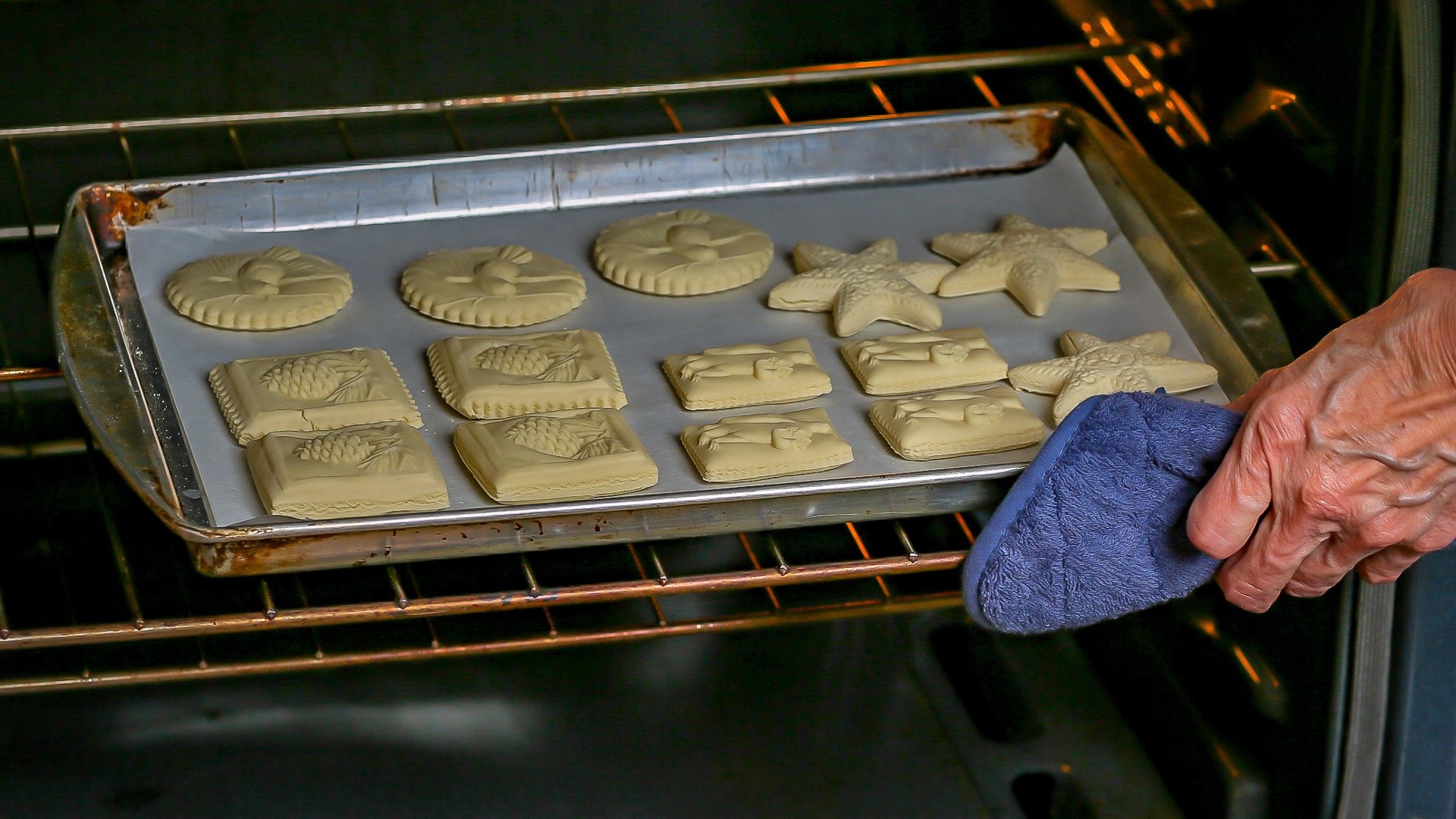
Helpful Tips for Molding and Baking Pressed Cookies
Watch Our Video
Connie shows how to make Perfection Springerle Cookies!
General Baking Directions for Printing Cookies
Size and liquidity of eggs, flour, and weather can affect your dough. Use your senses to decide if the dough will print well without sticking. You may need to use less or more flour than the recipe states.
Brush flour or confectioner's sugar (use flour for cookies and confectioner’s sugar for candy) over mold with a clean, dry pastry brush to prevent sticking.
Prevent Sticking
Most printed cookies are dried 2-24 hours before baking (depending on the recipe, your schedule, humidity, etc.) Drying preserves the image during baking. Test bake one cookie first! It saves grief!
Drying
Ovens vary widely! If your test cookie “over puffs” or tilts, reduce heat, put an empty cookie sheet on bottom oven shelf, or prop the oven door slightly ajar with handle of a wooden spoon to wick off heat. For tiny cookies, you may need the temperature set as low as 200 degrees. In general, the smaller the cookie, the lower the temperature. The larger the cookie the longer the baking time. See the baking discussion in our Frequently Asked Questions section.
Baking Temperatures
Method #1 - For most cookies
Dough will be rolled approximately 3/8” to 5/8” thick with a plain rolling pin (deeper molds need thicker dough). Brush flour or confectioner’s sugar on the mold image, then imprint with your press (mold), cut out shape with knife, shaped cutter or pastry wheel, then dry and bake. Remember to “press and cut, press and cut” so that adjacent images are not distorted.
Method #2 - For very deep or large cookies
Roll out dough to desired thickness and, using a dry, clean pastry brush, apply flour or sugar and cut a piece of dough the approximate size needed for the mold. Press dough into the mold with fingers, working from center outward. You may lightly roll the back side of the cookie to smooth before turning out of the mold. Trim, dry and bake. To check your print, use light from the side – daylight or light from a floor lamp – so the shadows let you see if your prints are good.
Printing Cookies
Flat areas of larger cookies are vulnerable to “bubbles” while baking. Simply press then down manually and finish baking.
Bubbles
Hartshorn is an old-time leavening unexcelled for any cookies and produces an especially light, delicate texture. Hartshorn is the traditional leavening for Springerle cookies. Hartshorn can be substituted for baking powder proportionately one-to-one in cookie or cracker recipes. Hartshorn is not affected by age, but it will evaporate.
Doughs made with hartshorn store well, as its leavening action is only triggered by heat, not moisture. There will be an ammonia smell during baking, but it will be baked out of your cookies. (It used to come in a form like rock salt, so old recipes instructed “crush with a rolling pin” then dissolve in liquid.)
Do not eat the raw dough. You must bake out the ammonia. Don't use hartshorn for cakes and breads. Use only for cookies and crackers when you know that the ammonia will be completely baked out.
Hartshorn (Ammonium Carbonate or Baker’s Ammonia)
Flavoring oils are very strong and pure in flavor. I highly recommend their use in Springerle cookies.
Don’t be alarmed if anise oil crystallizes or congeals. Place the bottle in warm water until it is liquefied and shake.
Flavoring Oils
FAQs
Read more Frequently Asked Questions about baking and using our molds.
Recipes
Please enjoy these tested recipes. Molded cookies require specially created recipes to hold the imprint.

